James, Leslie Kerry
Killed in Action 1945-01-06


Birth Date: 1910-October-22
Born:
Son of Thomas H. James and Edith James, of Edmonton, Alberta, Canada.
Home: Highridge, Alberta
Enlistment:
Enlistment Date: Unknown
Service
RCAF
Unit
431 (B) Sqn- Squadron
The Hatiten Ronteriios Warriors of the Air: Iroquois
Base
Rank
Flight Lieutenant
Position
Flight Lieutenant
Service Numbers
C/18115
Prev: R/61041
Home
 Highridge, Alberta
Highridge, Alberta
Target
 Hanover Germany
Hanover Germany
First Burial
 War Cemetery At Durnbach, Germany
War Cemetery At Durnbach, Germany
Lancaster KB821
Avro Lancaster

Canadian Warplane Heritage Museum
The Avro Lancaster is a British Second World War heavy bomber. It was designed and manufactured by Avro as a contemporary of the Handley Page Halifax, both bombers having been developed to the same specification, as well as the Short Stirling, all three aircraft being four-engined heavy bombers adopted by the Royal Air Force (RAF) during the same wartime era.
The Lancaster has its origins in the twin-engine Avro Manchester which had been developed during the late 1930s in response to the Air Ministry Specification P.13/36 for a capable medium bomber for "world-wide use". Originally developed as an evolution of the Manchester (which had proved troublesome in service and was retired in 1942), the Lancaster was designed by Roy Chadwick and powered by four Rolls-Royce Merlins and in one version, Bristol Hercules engines. It first saw service with RAF Bomber Command in 1942 and as the strategic bombing offensive over Europe gathered momentum, it was the main aircraft for the night-time bombing campaigns that followed. As increasing numbers of the type were produced, it became the principal heavy bomber used by the RAF, the Royal Canadian Air Force (RCAF) and squadrons from other Commonwealth and European countries serving within the RAF, overshadowing the Halifax and Stirling. Wikipedia
431 (B) Sqn The Hatiten Ronteriios ("Iroquois")
History of the Squadron during World War II (Aircraft: Wellington X, Halifax V, III, Lancaster X)
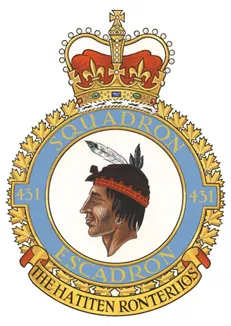
The Squadron was formed in November 1942 as the RCAF's 11th bomber squadron to be formed overseas, at Burn, Yorkshire, UK , as a bomber unit of No 4 Group of RAF Bomber Command. With squadron code letters SE it flew Vickers Wellington Mk X aircraft. In July 1943 it moved to Tholthorpe, Yorkshire , to become part of No 6 (RCAF) Group, at the same time re-equipping with Handley Page Halifax Mk V bombers. It moved again in December 1943 to become part of No 64 (RCAF) Base at Croft, Yorkshire , where it remained until the end of the war. Another change of aircraft, to Halifax Mk. III was made in March of 1944, and finally the squadron was equipped with Canadian-built Avro Lancaster Mk X aircraft from October 1944. After the termination of hostilities in Europe, it was earmarked to form part of the Tiger Force to attack Japan and left for Canada in June 1945. The Japanese surrender following the dropping of the atomic bombs made Tiger Force redundant, and the squadron was disbanded at Dartmouth, Nova Scotia in September of 1945.
In the course of operations the squadron flew 2584 sorties (including 11 bringing PoWs back to England) at a cost of 72 aircraft destroyed. Approximately 14000 tons of bombs were dropped. Aircrew awards were 1 DSO, 63 DFCs, 10 DFMs, 2 CGMs and 1 MiD. Battle Honours were: English Channel and North Sea 1943-44, Baltic 1943-44, Fortress Europe 1943-44, France and Germany 1944-45, Biscay Ports 1943-44, Ruhr 1943-45, Berlin 1943-44, German Ports 1943-45, Normandy 1944, Rhine, Biscay 1944.Moyes, Kostenuk and Griffin
Squadron History (Bomber Command Museum PDF)
Maps for Movements of 431 Squadron 1942-45
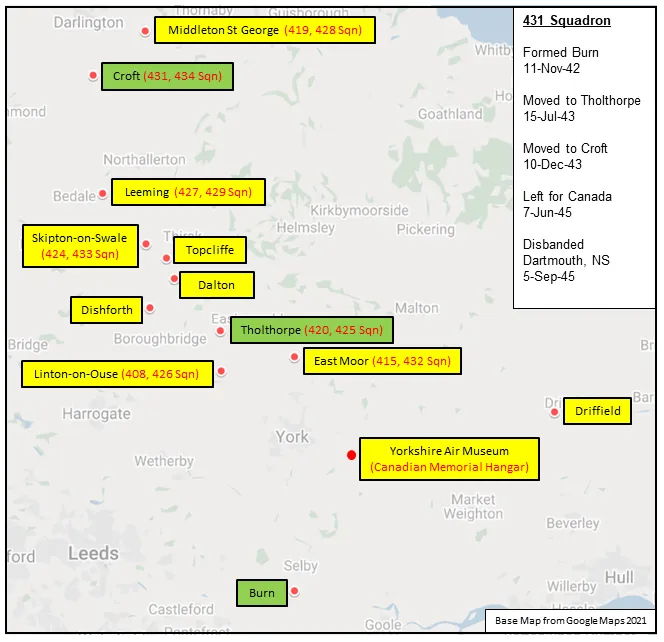
431 Squadron History Summary 1942-45
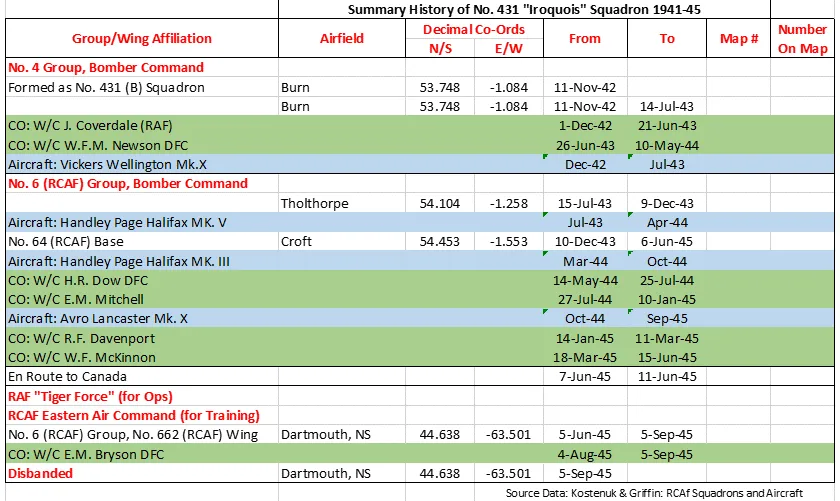
History of the Squadron Post-WWII (Aircraft: Tutor)
No. 431 (Fighter) Squadron re-formed at RCAF Station Bagotville, Quebec on 18 January 1954, using the new Canadair Sabre. The squadron was formed on a temporary basis until there were enough new CF-100s available to fulfill RCAF squadron needs. No. 431's duties included aerial combat training and displaying the capabilities of jet operations to the public at air shows: the team from No. 431 Squadron consisted of four Sabres and a solo aircraft. This was the first Sabre team to be authorized to perform formation aerobatics in Canada. 431 squadron was disbanded on 1 October 1954.
In 1969, Colonel O.B. Philp, base commander of CFB Moose Jaw and former leader of the defunct Golden Centennaires aerobatic team, considered using several of the leftover Golden Centennaire CT-114 Tutor aircraft for another team. These Tutors were still fitted for aerobatic flying. Philp, at this point, did not receive approval to form the new team; however, approval had been given for single Tutors to provide simple flypasts at local football games. To further the cause of an aerobatic team, Philp began informal enhanced formation practice for the instructors at 2 Canadian Forces Flying Training School with the aim of providing multi-aircraft flypasts at special events. In 1970, four-aircraft formations began providing flypasts at fairs and festivals, as well as Armed Forces Day at CFB Moose Jaw . In July 1970, a white Tutor was introduced to the formation for flypasts. Four white Tutors were finally flown together at the Abbotsford Air Show, followed by a flypast in Winnipeg. Known as the "2 Canadian Forces Flying Training School Formation Team", or informally as the "Tutor Whites", the team grew in size to seven aircraft in 1971 using eleven pilots, and gradually gained recognition. Formation flypasts were replaced with more complicated manoeuvres, and more aircraft were added as the team matured. A contest to give the air demonstration team a formal name was held at Bushell Park Elementary School at CFB Moose Jaw, and resulted in the name "Snowbirdsâ€, which was formally adopted on 25 June 1971. The Snowbirds were officially authorized to be designated the "Canadian Forces Air Demonstration Team" on 15 January 1975, and were formed into their own squadron by reactivating 431 Squadron (renamed 431 Air Demonstration Squadron) on 1 April 1978. .Wikipedia
And the rest is history……………………
 Canadian Virtual War Memorial
Canadian Virtual War Memorial Commonwealth War Graves Commission
Commonwealth War Graves Commission www.findagrave.com
www.findagrave.com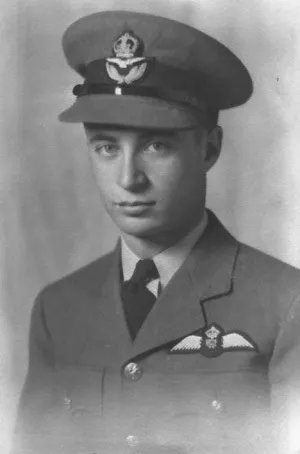

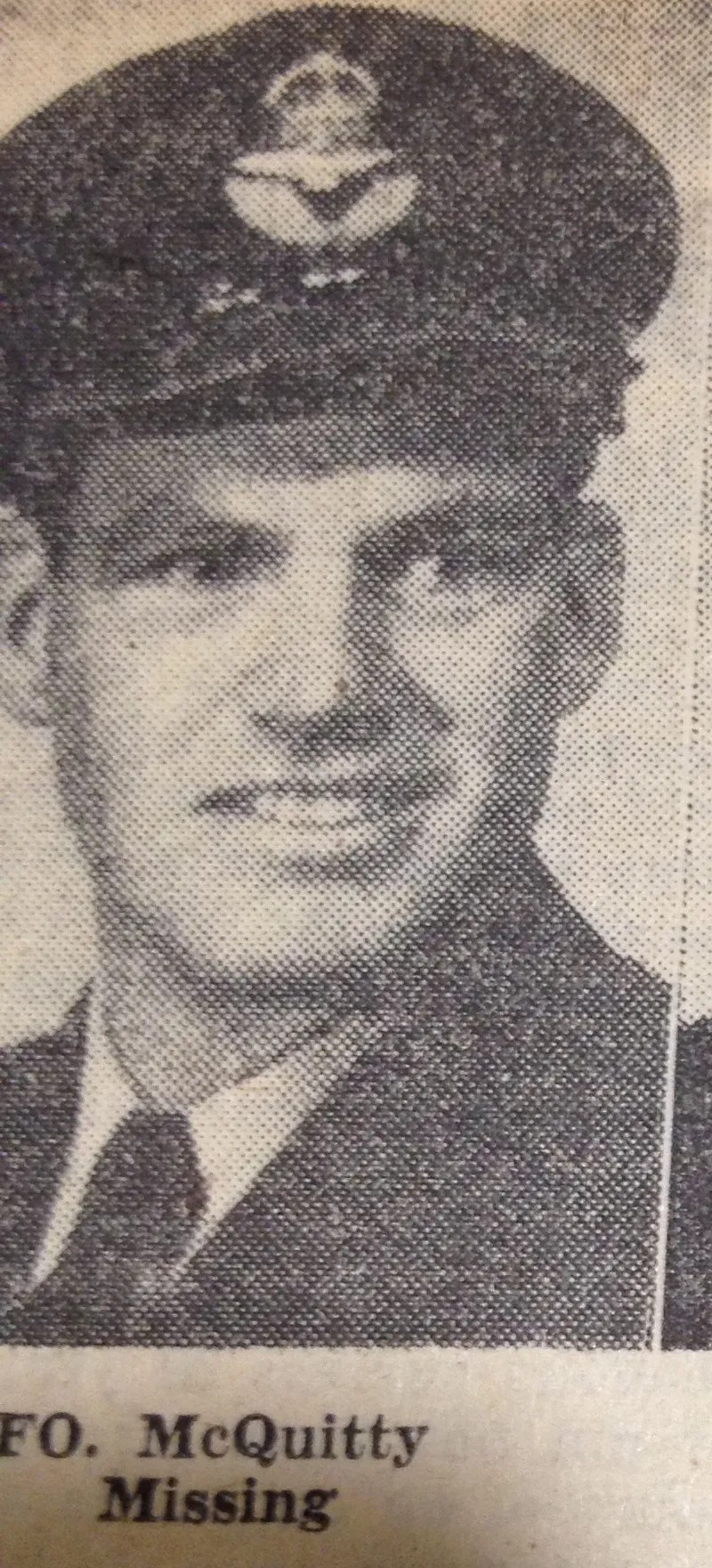
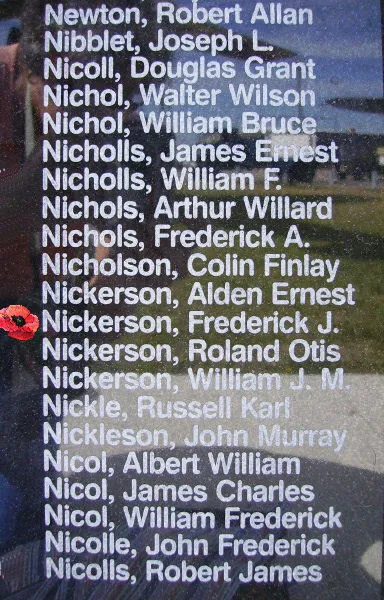

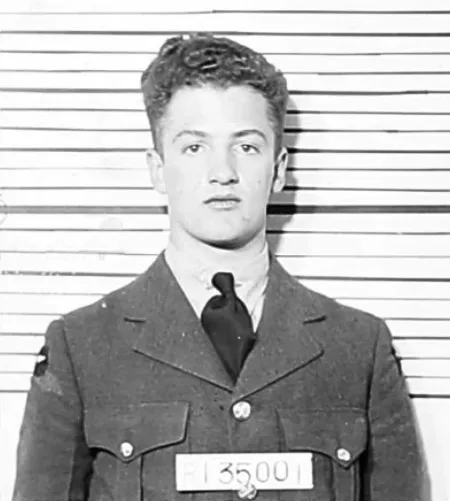
 Lancaster Bomber
Lancaster Bomber Wikipedia
Wikipedia Harold A Skaarup Web Page
Harold A Skaarup Web Page